Michael Swanwick's Blog, page 14
October 15, 2024
All Souls Night (Part 15 of 31)
.

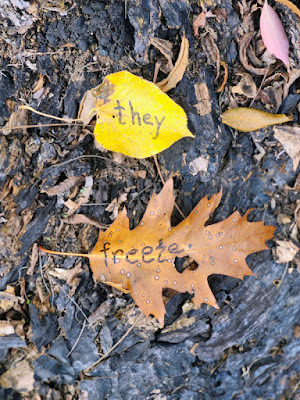
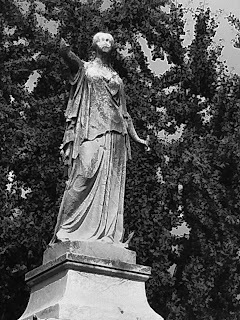
CONTINUED TOMORROW.
Above: Every Autumn, I write a Halloween story, write it out on leaves (one word per leaf), photograph the leaves, and then leave them where.I found them. The story is then serialized, starting on October 1 and concluding on the 31st--All Souls Day.
*
October 14, 2024
All Souls Night (Part 14 of 31)
.


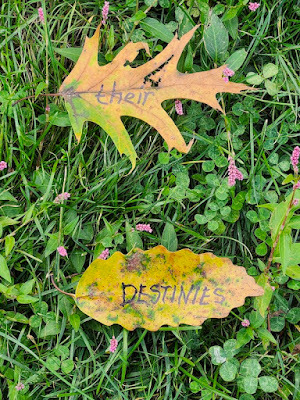
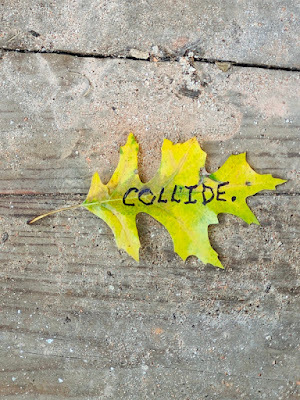
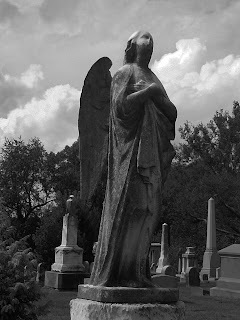
CONTINUED TOMORROW.
Above: Every Autumn, I write a Halloween story, write it out on leaves (one word per leaf), photograph the leaves, and then leave them where.I found them. The story is then serialized, starting on October 1 and concluding on the 31st--All Souls Day.
*
October 13, 2024
All Souls Night (Part 13 of 31)
.
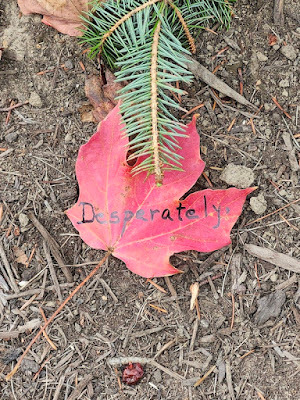
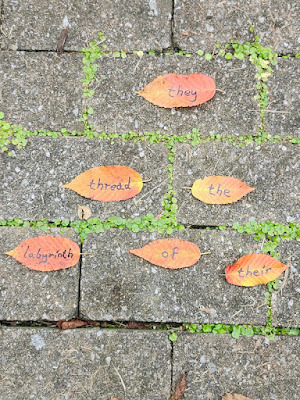
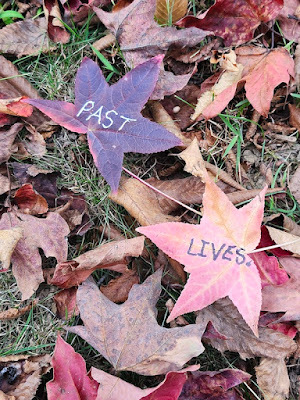
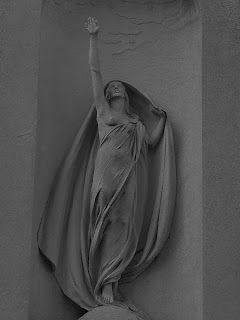
CONTINUED TOMORROW.
Above: Every Autumn, I write a Halloween story, write it out on leaves (one word per leaf), photograph the leaves, and then leave them where.I found them. The story is then serialized, starting on October 1 and concluding on the 31st--All Souls Day.
*
October 12, 2024
All Souls Night (Part 12 of 31)
.
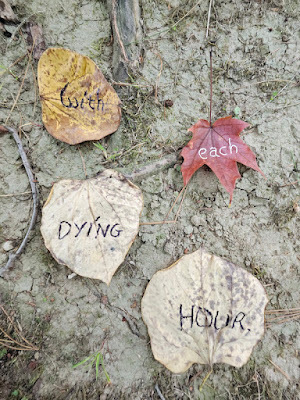
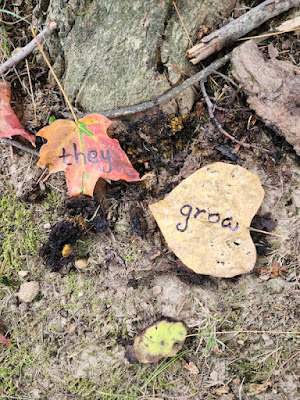
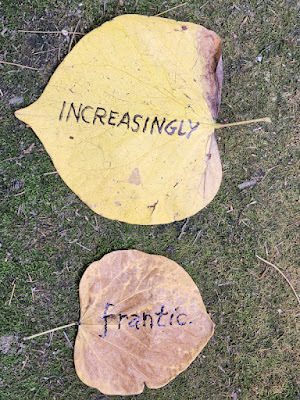
CONTINUED TOMORROW.
Above: Every Autumn, I write a Halloween story, write it out on leaves (one word per leaf), photograph the leaves, and then leave them where.I found them. The story is then serialized, starting on October 1 and concluding on the 31st--All Souls Day.
*
October 11, 2024
All Souls Night (Part 11 of 31)
.
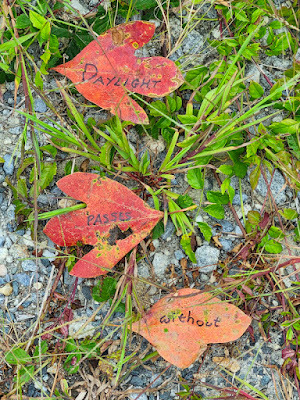
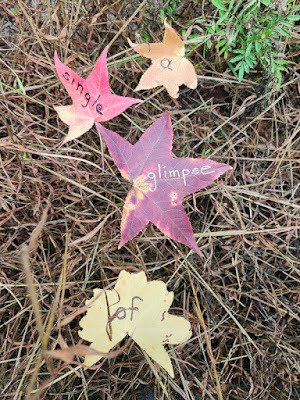

CONTINUED TOMORROW.
Above: Every Autumn, I write a Halloween story, write it out on leaves (one word per leaf), photograph the leaves, and then leave them where.I found them. The story is then serialized, starting on October 1 and concluding on the 31st--All Souls Day.
*
October 10, 2024
All Souls Night (Part 10 of 31)
.
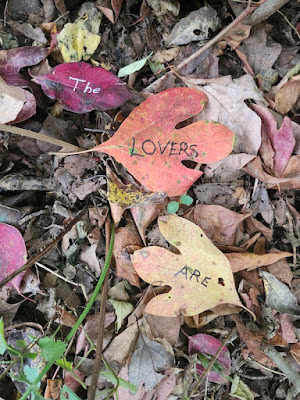
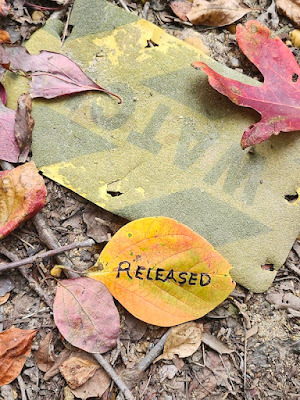
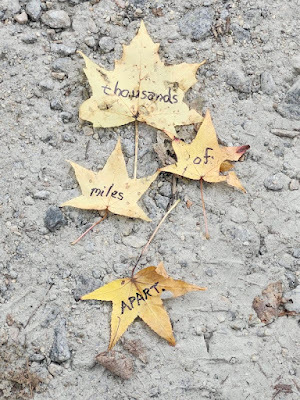
CONTINUED TOMORROW.
Above: Every Autumn, I write a Halloween story, write it out on leaves (one word per leaf), photograph the leaves, and then leave them where.I found them. The story is then serialized, starting on October 1 and concluding on the 31st--All Souls Day.
*
October 9, 2024
All Souls Night (Part 9 of 31)
.

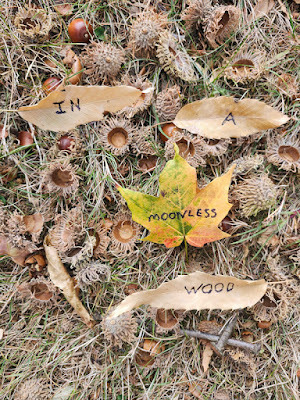
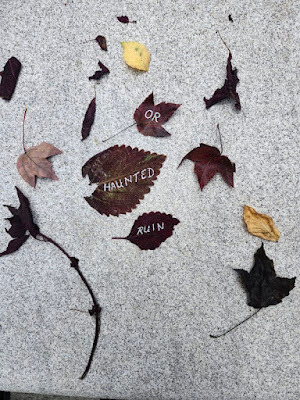
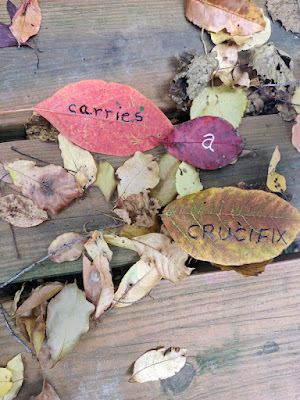

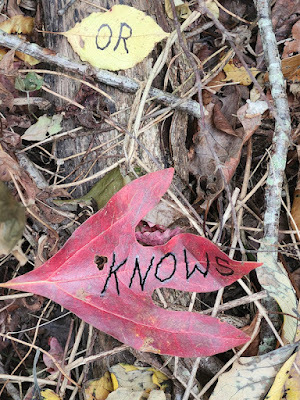

CONTINUED TOMORROW.
Above: Every Autumn, I write a Halloween story, write it out on leaves (one word per leaf), photograph the leaves, and then leave them where.I found them. The story is then serialized, starting on October 1 and concluding on the 31st--All Souls Day.
*
October 8, 2024
All Souls Night (Part 8 of 31)
.

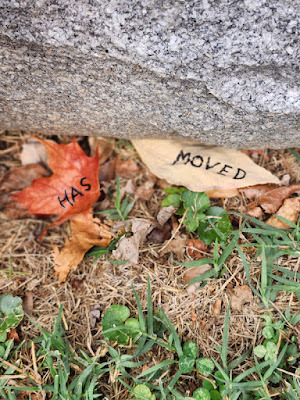

CONTINUED TOMORROW.
Above: Every Autumn, I write a Halloween story, write it out on leaves (one word per leaf), photograph the leaves, and then leave them where.I found them. The story is then serialized, starting on October 1 and concluding on the 31st--All Souls Day.
*
October 7, 2024
All Souls Night (Part 7 of 31)
.



CONTINUED TOMORROW.
Above: Every Autumn, I write a Halloween story, write it out on leaves (one word per leaf), photograph the leaves, and then leave them where.I found them. The story is then serialized, starting on October 1 and concluding on the 31st--All Souls Day.
*
October 6, 2024
All Souls Night (Part 6 of 31)
.

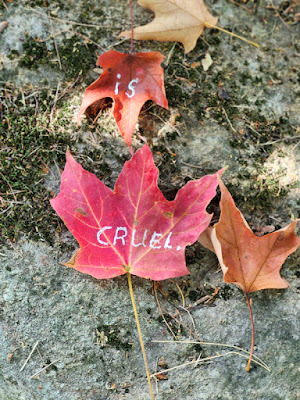
CONTINUED TOMORROW.
Above: Every Autumn, I write a Halloween story, write it out on leaves (one word per leaf), photograph the leaves, and then leave them where.I found them. The story is then serialized, starting on October 1 and concluding on the 31st--All Souls Day.
*
Michael Swanwick's Blog
- Michael Swanwick's profile
- 552 followers



